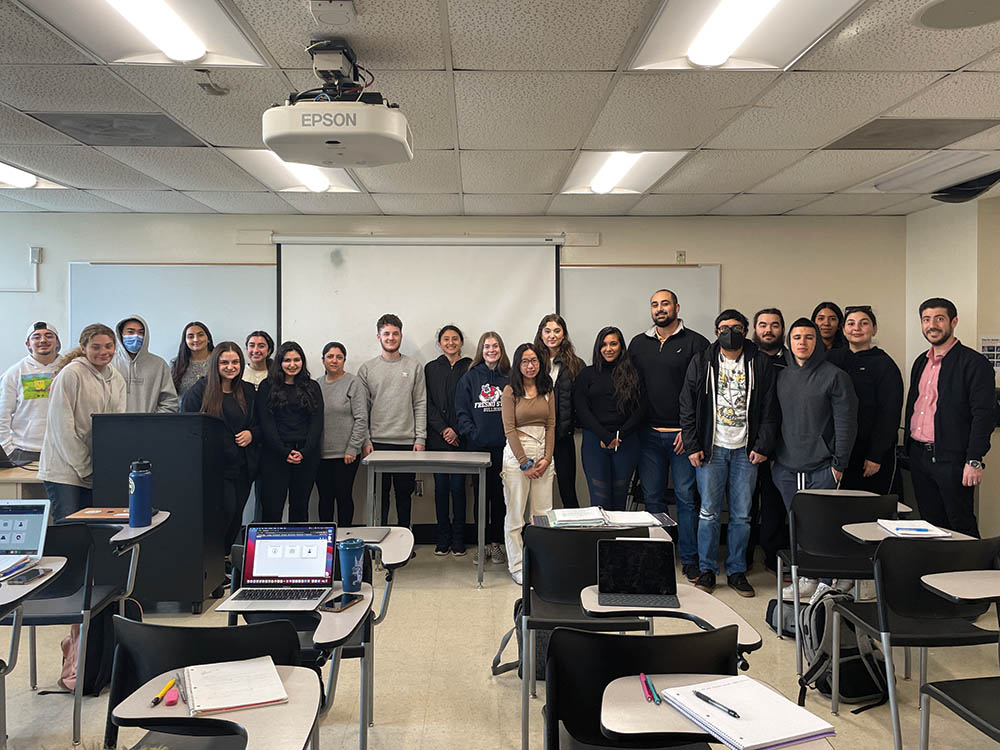
Natalie Agazarian
Editor
Armenian 148, Masterpieces of Armenian Culture, is a general education course taught by Dr. Hagop Ohanessian. The class is designed to delve into various forms of Armenian literature and art through distinct periods in Armenian history. It fulfills upper division Area IC of the Fresno State General Education requirements and is a required course for completing the Armenian Studies Minor.
In a broad sense, “Masterpieces of Armenian Culture” functions as a literary course, using context and criticism as methods for understanding literature. The class analyzes various genres including oral traditions, epics, poetry, folklore, and music, as well as discussing significant authors in Armenian culture. Surveying the authors, events, and literary works over time allows students to not only to gain a deeper understanding of Armenian masterpieces, but to also appreciate the significance of Armenian culture in a world context.
“My favorite part of the course is the structure. I like how the material is chronological and discusses the notable writers and events that happened in that specific time period,” commented student Gregory Zohrabian.
One of the first literary eras explored in the class was the fifth century “Golden Age.” During this period, the alphabet was created by Mesrop Mashtots, the first Armenian school opened, and the “translation movement” began. A solid foundation was built for original works in the Armenian language, rather than relying on Greek or Syriac writings. This resulted in an increase in education and literacy.
“It’s interesting to see how history is recorded and the parallels between literature throughout the world during that time,” said Caleb Arizmendez, who is pursuing a Minor in Armenian Studies.
One of the favorite aspects of the class for Dr. Ohanessian is the “connection between Armenian literature and Greek mythology and oral traditions, and bringing awareness to the Armenian tales.”
Folklore, oral traditions, and epics are mainly observed through Armenia’s national epic: David of Sassoun. The tradition has been told orally since the seventh century, and was first transcribed by an Armenian priest named Garegin Srvandztiants in 1874. The epic reflects the life, beliefs, traditions, customs, philosophy, and overall worldview of the Armenian people – ideals that are still relevant to the Armenian people today.
“The course has shed light on the role of folktales, which have been passed down through the generations,” stated Val Gomez. “This facilitated the expression of Armenian history by various writers.” The tales of the hero David and his legendary family members highlight the struggles between indigenous Armenians and foreign groups, good versus evil, and the ideas of justice and freedom. According to Dr. Ohanessian, the epic’s legendary and heroic attributes “will enable the students to understand the antecedents of contemporary cultures and civilizations.”
Along with historiography and folklore, poetry began to emerge in Armenian literature in the tenth century. Theologian St. Grigor Narekatsi, who was highly educated, became not only the first Armenian poet, but the first to express the elements of nature with texture and color. His masterpiece, the Book of Lamentations, consisted of 95 prayers that portrayed original concepts of vulnerability and emotional intricacies. More so, his masterpiece served as a guide to the Armenian people in their approach to prayer, as it addresses sin in an effort to understand the Christian faith.
Literature is often a reflection or documentation of current events, and many of the literary works discussed in the class were inspired by direct accounts of Armenian culture and history. Dr. Ohanessian says that “through the lens of literature” the studies of this course brings awareness to the Armenian identity by providing students with a “better understanding of Armenian heritage.”
One way in which this is analyzed is by studying the differences in Eastern and Western Armenian writers, and on the literary movements that developed across the Armenian diaspora. Exposure to this literature gives insight into the major literary themes in Armenia during the 19th century. Following the Russo-Turkish War, Eastern Armenian writers developed a patriotic and nationalistic ideology, while Western Armenians, who were impacted by the Ottoman Empire and were more closely tied to Europe, formulated a more romantic literature. Studying these similarities and differences is an important element in bringing awareness to the Armenian identity and showcases “the richness of Armenian culture and the importance of diversity in education,” stated Galvez.
Through an examination of unique literature over time, the Masterpieces of Armenian Culture course is one that not only satisfies necessary university requirements, but that demonstrates the powerful impact literature can have on the preservation of a culture.
 Hye Sharzhoom Armenian Action
Hye Sharzhoom Armenian Action